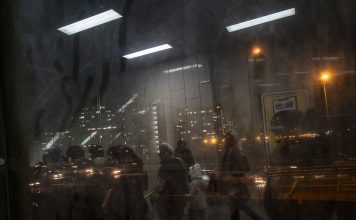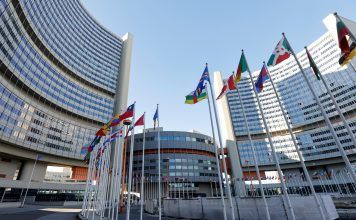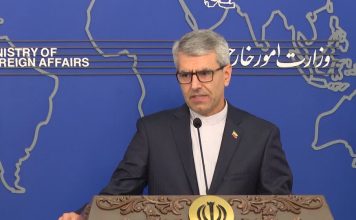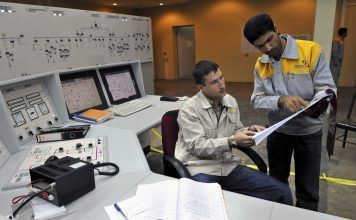By Ahmad Rafat
Tehran University students staged a mass protest on July 9, 1999, after the Iranian Ministry of Intelligence shut down the Salam newspaper for publishing a secret memo by the former deputy intelligence minister for security affairs, Saeed Emami (1958-1999), urging an end to the relative press freedom that existed then.
Subsequently, special units linked to extremist factions in Iran attacked student dormitories on the university campus. Seven students reportedly died in the attack, hundreds of others were injured, and one student named Saeed Zinali went missing without a trace.
The event marked the first organized challenge to the Islamic Republic since it was established in 1979, and opened a new chapter in the student protest movement.
An iconic photograph on the July 1,1999 cover of The Economist magazine highlighted the bloody crackdown on the student protest. Taken by prominent photojournalist Jamshid Bairami, it showed a student, Ahmad Batebi, holding up the blood-stained T-shirt of another student injured during the protest.
Subsequently, Mr. Batebi was arrested and sentenced to death. Eventually, a court reduced his sentence to 15 years’ imprisonment. After serving nine years, Batebi left Iran illegally while on a medical furlough.
Batebi currently lives and works as a journalist in Washington, D.C. He spoke to Kayhan Life on the 24th anniversary of the student uprising.
Mr. Batebi, it has been 24 years. You unwittingly became the embodiment of the student protest 24 years ago. How has the student protest movement changed in the past 24 years in Iran?
It is probably better to focus on what has not changed in the past 24 years, i.e., the continued oppression and killings. The main difference between now and then is the internet and social media.
Only a few radio stations reported the protests 24 years ago. News spreads fast through social media and satellite TV these days.
Today’s technology enables people to launch their media channels, and publish their writings, audio, and video messages.Technology has created more opportunities for collecting and disseminating information than 24 years ago.
Students reacted angrily for the first time 24 years ago.
The anger was a response to the violation of their personal space, i.e., the attack on the dormitory. There had been clashes on the university campus before, but until then, no attack on dormitories resulting in the death of students.
We should not forget that the Ministry of Intelligence had played a role in the murder of several opposition members during the [1980s] serial killings.
In those days [1990s], under the reformist government, relative press freedom played a role in informing and energizing the public.
You and three other students were sentenced to death. Yet you were not executed. Why was the death sentence not carried out?
We asked Judiciary officials why we were sentenced to death. I asked the same question while being interrogated. My interrogator said that I would be executed unless I confessed that I had fabricated the picture and that the stains on the T-shirt were chicken blood and tomato juice.
The interrogator added that the four of us were to be hanged publicly at the four corners of the city because we did not confess to fabricating the photograph.
What caused them not to hang you?
The reformist government tried hard to muster respect and credibility for the Islamic Republic, and executions would have been counterproductive.
Also, the UN Secretary-General was visiting Tehran, and there was increased international pressure on Iran not to go ahead with the executions.
Besides, the authorities had silenced the protests so successfully that there was no need to scare and terrorize the public by hanging anyone.
Subsequently, my sentence was changed to 15 years in prison.
Students have engaged in another protest movement in the past ten months. What difference do you see between the students who came out 24 years ago and those protesting today?
We have a progressive civil society which is more developed than in other Middle Eastern nations.
Every sector of Iranian society, especially university students, plays a significant role.
The student movement has matured more than any other segment of society in recent years. Its only weakness is the inability to realize its desired role fully.
How did the publication of the photograph, years of imprisonment, and forced departure from the country change your life?
I had planned to continue my university studies in filmmaking and had envisioned living an ordinary life.
I continued my studies in sociology in prison instead. The violence I experienced in prison changed me profoundly.
From age 20 until I was almost 30, I lived in a violent prison environment — instead of doing what a man does in ordinary situations, such as dating a woman and other experiences of the sort.
In prison, one is constantly forced to sleep with one eye open.
In short, I lost my youth and continued to carry the prison around inside me, even after being freed.
How do you feel when you see that famous photograph now? Years ago, Jamshid Bairami told me: “I would have never given that photograph to The Economist if I knew it would get Ahmad Batebi arrested and imprisoned.”
I have no doubt that Jamshid Bairami would not have shared that photograph with others if he knew it would profoundly impact my life.
I always believed that he and I acted correctly, both when I was in prison and after I met Bairami. He was right in publishing the photograph, and I was correct in resisting a regime that tried to force me to confess that I had fabricated the picture.
[aesop_image img=”https://kayhanlife.com/wp-content/uploads/2023/07/2006-11-29T120000Z_848775039_GM1DUAYAMXAA_RTRMADP_3_IRAN-STUDENTS.jpg” panorama=”off” credit=”REUTERS/Jamshid” align=”center” lightbox=”off” captionsrc=”custom” caption=”Ahmad Batebi holds up a T-shirt belonging to a friend who was beaten by hardline vigilantes during the worst social unrest in Iran since the 1979 Islamic Revolution in Iran July 12, 1999. An Iranian court sentenced two students to death for their role in a social unrest in Tehran in July a newspaper reported December 25, 1999. The daily Fath quoted a student group as saying that Batebi and Akhbar Mohammadi had been convicted by the court as ‘Mohareb’, or someone who makes war on Islam, a charge punishable by death under Islamic sharia law. ” captionposition=”left” revealfx=”off” overlay_revealfx=”off”]







